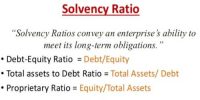Depict in brief FOB destination and FOB shipping with example.
FOB destination: FOB destination is a contraction of the term “Free on Board Destination.” The term means that the buyer takes delivery of goods being shipped to it by a supplier once the goods arrive at the buyer’s receiving dock, There are four variations on FOB destination terms, which are:
- FOB destination, freight prepaid and allowed. The seller pays and bears the freight charges and owns the goods while they are in transit. Title passes at the buyer’s location.
- FOB destination, freight prepaid and added. The seller pays the freight charges but bills them to the customer.The seller owns the goods while they are in transit. Title passes at the buyer’s location.
- FOB destination, freight collect. The buyer pays the freight charges at time, of receipt, though the supplier still owns the goods while they are in transit.
- FOB destination, freight collect and allowed. The buyer pays for the freight costs, but deducts the cost from the supplier’s invoice. The seller still owns the goods while they are in transit.
FOB shipping point: The term FOB shipping point is a contraction of the term “Free on Board Shipping Point.” The term means that the buyer takes delivery of goods being shipped to it by a supplier once the goods leave the supplier’s shipping dock. Since the buyer takes ownership at the point of departure from the supplier’s shipping dock, the supplier should record a sale at that point.
The buyer should record an increase in its inventory at the same point (since the buyer is undertaking the risks and rewards of ownership, which occurs at the point of departure from the supplier’s shipping dock). Also, under FOB shipping point terms, the buyer is responsible for the cost of shipping the product to its facility.
If the goods are damaged in transit, the buyer should file a claim with the insurance carrier, since the buyer has title to the goods during the period when the goods were damaged.
Contra revenue accounts: Contra means against. In double entry bookkeeping terms, a contra revenue account refers to an account which is offset against a revenue account. As a revenue account is normally a credit balance, a contra revenue account will normally be a debit balance. When the two balances are offset against each other they show the net balance of both accounts.
Contra revenue accounts are useful when in bookkeeping terms a business needs to keep the two accounts separate so as not to lose information, but for presentation reasons in the financial statements, it is necessary to offset them against each other and show a net balance.
The contra revenue accounts list includes the following:
- Sales returns contra revenue account.
- Sales allowances contra revenue account.
- Sales discounts contra revenue account.














